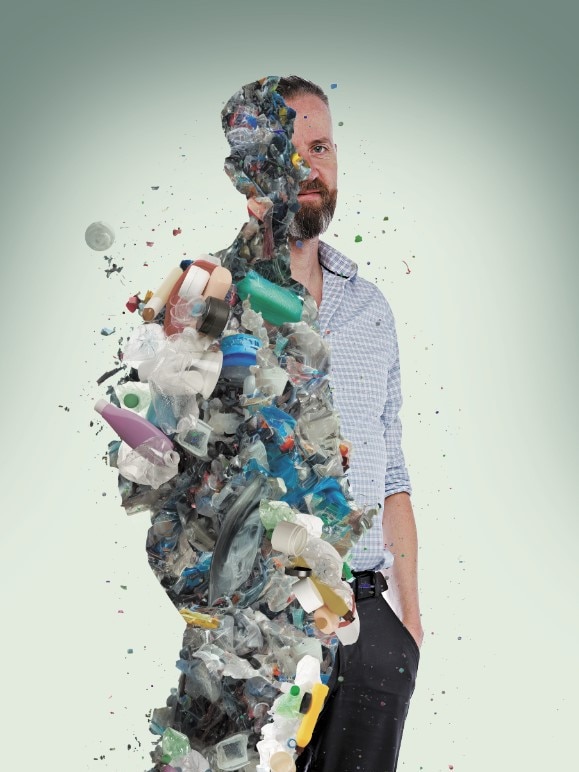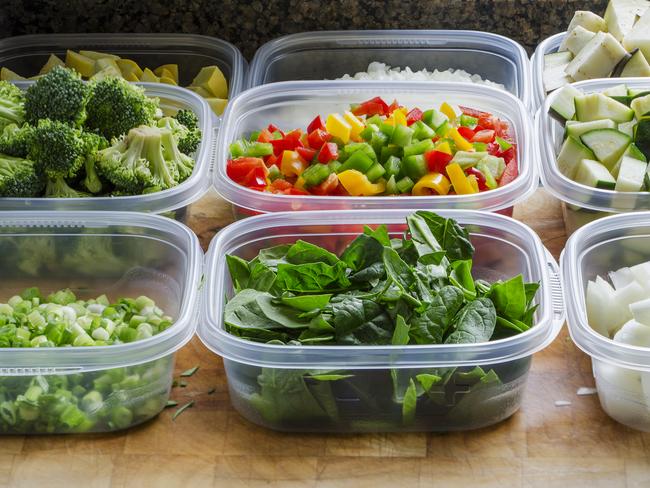Microplastics: Why Aussies are at risk and how to reduce your exposure
A simple test can determine the level of toxic plastic chemicals you have in your body – but be prepared for a shock.
Environment
Don't miss out on the headlines from Environment. Followed categories will be added to My News.
Turns out those playground taunts were right, and I am actually quite a plastic person.
And now I have the papers to prove it.
Thanks to the Minderoo Foundation, Twiggy and Nicola Forrest’s mob of switched-on scientists dedicated to solving real-world problems, I recently took a test through an American lab to determine the level of nanoplastic chemicals in my body.
Result: I have quite a lot.
The Million Marker lab compares individual results to the roughly 3000 Americans who get tested this way each year, so you can see if you’re more or less plastic than the country that gave the world the Kardashians.
For the family of chemicals known as phthalates, which make plastics more flexible and durable, the results of my urine test showed I was at the lower end of the scale, with readings that were less than 92 per cent of the cohort. Whoo!
But my levels of the plastic nasty known as Bisphenol A (BPA) were greater than 29 per cent of people tested, and when it comes to its sneaky substitute Bisphenol S (BPS), my levels were 0.97 micrograms per gram, a result which is higher than 70 per cent of the population.


Bisphenols are used in the sorts of plastics we use every day: food containers, packaging, water pipes, as well as other things, like shiny receipt paper, and the linings of canned food.
Bisphenols and phthalates are what’s known as endocrine disrupters, which means they mimic the hormonal signals that regulate many bodily functions.
They’ve been linked to diabetes, cardiovascular disease, endometriosis, infertility, immune disorders and cancer.
But how much is too much, when it comes to these chemicals kicking around our system? And more importantly, will they ultimately kill me? Will my high BPS be the end of my BPM?
Minderoo Foundation research has estimated an extra 45,000 deaths in the 55-64 age group in the US each year could be attributable to exposure to just one phthalate, dihexyl phthalate, otherwise known as DHP.
But it’s not as though they’re guaranteed to knock you off, either.
Pediatrician Dr Christos Symeonides, the Foundation’s principal researcher in plastics and human health, said our bodies did a good job of flushing out these toxic substances – unlike the PFAS “forever chemicals” which linger forever – but the problem was we are being exposed to them again and again.
“Your exposure could make a big difference from one day to the other as to whether you had tinned tomatoes in your food that day and you didn’t the next day,” he said.
Food Standards Australia New Zealand (FSANZ) said it had undertaken comprehensive monitoring of phthalates and BPA in a broad range of foods as part of the Australian Total Diet Study.
“The surveys concluded there were no food safety concerns for Australian consumers,” a statement from FSANZ said.

But eating and drinking is just one way substances enter our bodies. Plastics break down and degrade all the time, reacting with their surroundings and releasing part of themselves in the process.
So what’s the answer? Should we be trying to limit our exposure to plastic, or cut it out altogether? Is that even feasible?
Simple answer: not really.
“We can do one or two things to reduce our exposure. And then we’ve got to call on there being a safer system for controlling which chemicals are allowed to be used in plastics,” Dr Symeonides said.
With the United Nations set to meet in South Korea in November this year to hammer out a global plastics treaty, Dr Symeonides said he was hopeful of progress.
“Plastics don’t need to have this toxicity,” he said. “We don’t need to be using phthalates. We can be choosing plastics that don’t need as many plasticisers added to it.
“This is not about saying we can’t have plastics. We need to be more aware of the health impacts of plastics so can have safer plastics,” Dr Symeonides said.
More Coverage
Originally published as Microplastics: Why Aussies are at risk and how to reduce your exposure





